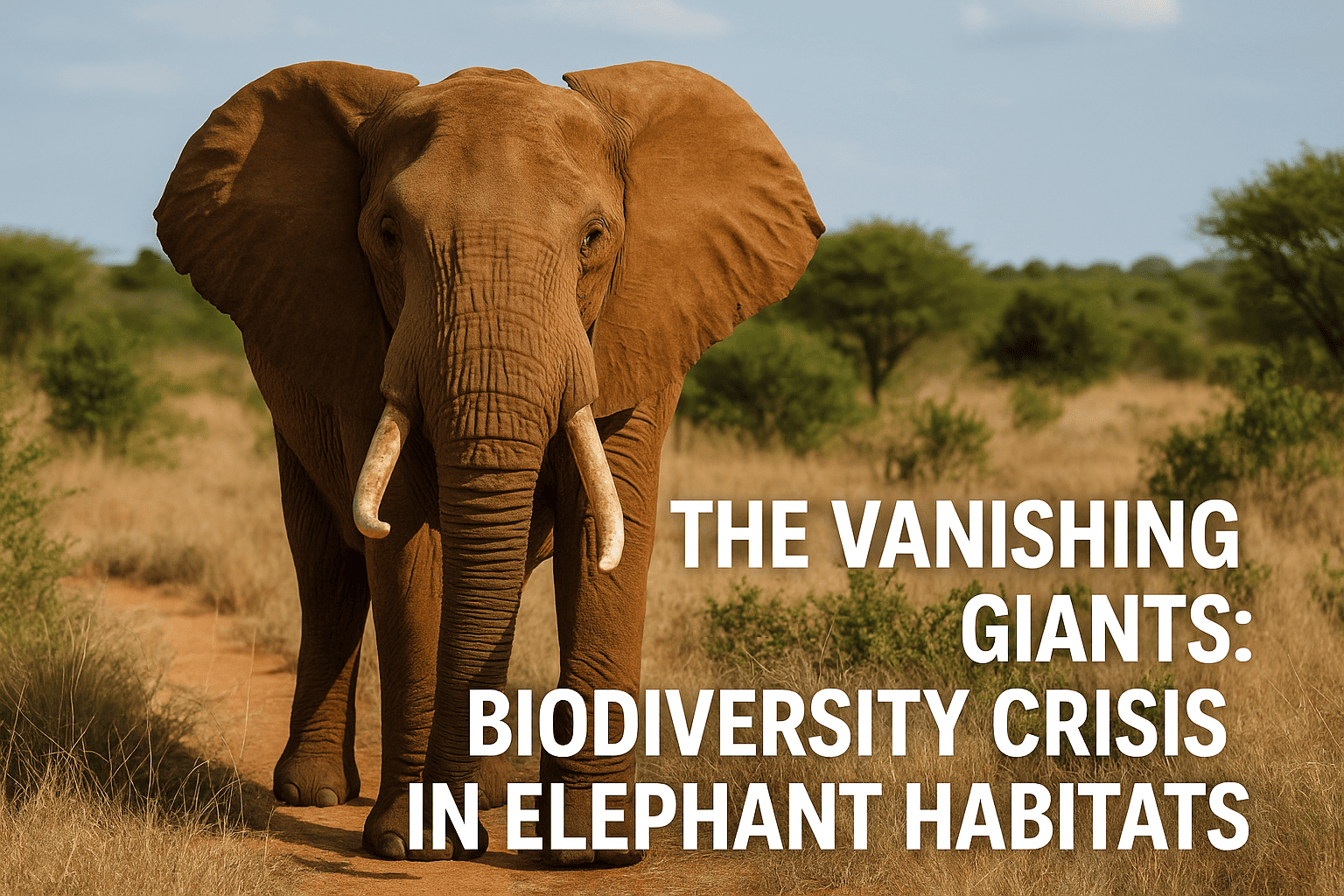Across the grasslands of Africa and the forests of Asia, elephants have long stood as iconic symbols of biodiversity and ecological balance. These intelligent, social, and keystone species play critical roles in shaping their habitats and maintaining the structure of ecosystems. However, elephant populations are now facing an alarming decline, driven by habitat fragmentation, poaching, human-wildlife conflict, and climate change. This blog examines the biodiversity crisis unfolding in elephant habitats, presenting a scientific overview and contextualizing the broader ecological consequences.
Ecological Role of Elephants
Elephants are often referred to as “ecosystem engineers.” Their feeding behaviors—including uprooting trees, dispersing seeds, and digging water holes—contribute to the structural integrity and biodiversity of their environments. In African savannas, elephants help maintain open grasslands by limiting bush encroachment. In tropical forests, they aid in seed dispersal for a wide variety of flora, promoting genetic diversity and plant regeneration.
A study by Campos-Arceiz and Blake (2011) emphasizes that the loss of elephants could cause cascading effects in ecosystems, leading to reduced forest composition, limited seedling regeneration, and altered habitat conditions for other wildlife species.
Population Decline and Threats
According to the International Union for Conservation of Nature (IUCN), African forest elephants (Loxodonta cyclotis) have declined by over 86% in 31 years, while African savanna elephants (Loxodonta africana) have decreased by at least 60% over 50 years. Asian elephants (Elephas maximus) are also endangered, with only about 50,000 remaining in fragmented pockets across 13 countries.
Key Drivers:
– **Poaching for ivory** remains a principal threat. Despite international bans, illegal trade persists due to high demand in black markets.
– **Habitat loss** from agricultural expansion, logging, and infrastructure development.
– **Human-wildlife conflict**, especially in India and Sri Lanka, where elephants often raid crops and risk retaliation.
– **Climate change**, which alters water sources and vegetation availability, pushing elephants to migrate into human-dominated landscapes.
Biodiversity Loss in Elephant Habitats
The decline in elephant numbers has direct and indirect effects on biodiversity. With fewer elephants to disperse seeds, certain tree species decline in abundance, affecting fruit-eating mammals and birds. Water-dependent species also suffer when elephants no longer create or maintain waterholes.
For instance, studies in Central African forests have shown a marked decrease in plant species diversity in areas devoid of elephants. Similarly, the absence of elephants in Asian forests correlates with denser undergrowth and reduced habitat suitability for smaller mammals.
Conservation Efforts and Challenges
Protected Areas and Anti-Poaching Strategies:
– National parks like Amboseli (Kenya), Chobe (Botswana), and Periyar (India) offer sanctuaries, though enforcement and funding remain inconsistent.
– Technological interventions such as GPS collars, drone surveillance, and AI-powered camera traps are improving monitoring.
Transboundary Cooperation:
– The Kavango-Zambezi Transfrontier Conservation Area (KAZA) spans five countries and enables elephant movement across political boundaries, reducing inbreeding and ensuring genetic diversity.
Community-Based Conservation:
Programs like the Elephant Conservation Network in Thailand engage local communities in coexisting with elephants. Financial incentives for protecting elephants (eco-tourism, compensation schemes) are helping shift attitudes from conflict to coexistence.
Future Outlook and Recommendations
Conserving elephants is not just about protecting a charismatic species—it is integral to sustaining biodiversity, climate resilience, and ecological stability. Long-term conservation must:
– Integrate habitat corridors in land-use planning
– Strengthen international laws on ivory trafficking
– Promote indigenous stewardship and local engagement
– Fund large-scale ecological studies to monitor long-term impacts
Conclusion
Elephants are more than just large mammals—they are biodiversity catalysts. The crisis in their habitats signals a deeper ecological unraveling. Protecting them demands urgent, coordinated, and science-informed action. In safeguarding elephants, we safeguard the symphony of life that depends on their presence.

